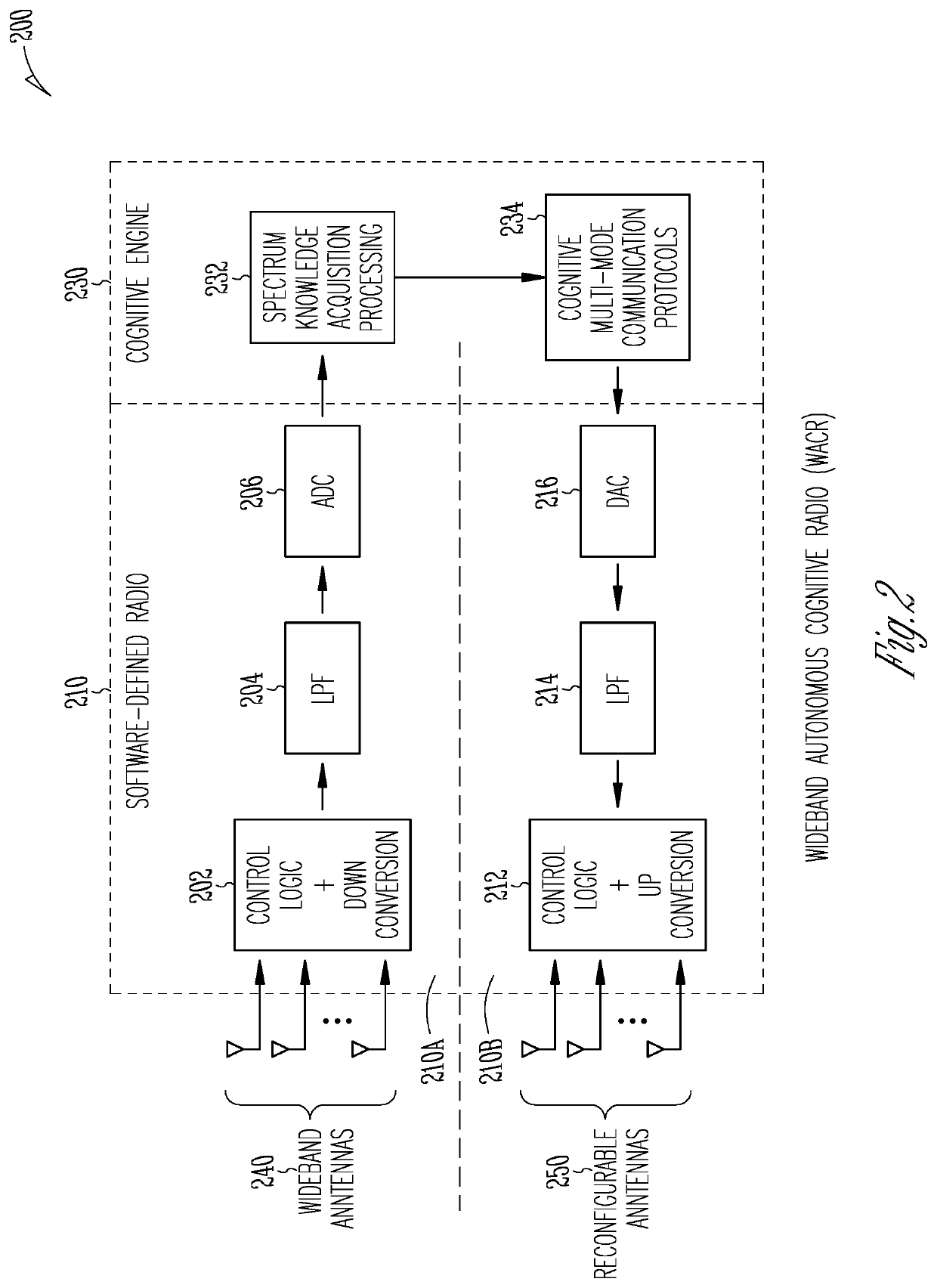Reinforcement learning based cognitive Anti-jamming communications system and method
a communication system and cognitive technology, applied in the field of reinforcement learning based cognitive anti-jamming communications system and method, can solve the problems of reducing network effectiveness, limiting communication, reactive jamming using less energy, and being relatively difficult to d
- Summary
- Abstract
- Description
- Claims
- Application Information
AI Technical Summary
Benefits of technology
Problems solved by technology
Method used
Image
Examples
example 1
[0131 is an apparatus of a cognitive radio, the apparatus comprising: processing circuitry arranged to: train each of a sensing and communications policy using reinforcement learning (RL) to track and avoid a jammer; classify a detected signal on a sensing channel using an artificial neural network (ANN), the ANN having an input neuron of a parameter of the interference, a hidden layer comprising multiple neurons, and an output neuron that provides ANN-based classification of a detected signal on the sensing channel, the ANN-based classification selected from the jammer and a valid network signal; and after initial training of each of the sensing and communications policy: the sensing policy configures the cognitive radio to determine whether the jammer is present on a current sensing channel and the communications policy configures the cognitive radio to communicate using a current communications channel, and the sensing and communications policies are coupled using a reward that p...
example 14
[0144 is a computer-readable storage medium that stores instructions for execution by one or more processors of a cognitive radio, the one or more processors to configure the cognitive radio to, when the instructions are executed: train each of a sensing and communications policy using reinforcement learning (RL) to track and avoid a jammer; classify a detected signal on a sensing channel using an artificial neural network (ANN), the ANN having input neurons of higher order cumulants of the detected signal and an output neuron that provides ANN-based classification of the detected signal, the ANN-based classification selected from the jammer and a valid network signal; and couple the sensing and communications policy during communication by penalizing the sensing and communications policy using a sensing reward comprising a sensing weight times a sensing time and a communications reward comprising a communications weight times a communications time, the sensing time being a time the...
PUM
 Login to View More
Login to View More Abstract
Description
Claims
Application Information
 Login to View More
Login to View More - R&D
- Intellectual Property
- Life Sciences
- Materials
- Tech Scout
- Unparalleled Data Quality
- Higher Quality Content
- 60% Fewer Hallucinations
Browse by: Latest US Patents, China's latest patents, Technical Efficacy Thesaurus, Application Domain, Technology Topic, Popular Technical Reports.
© 2025 PatSnap. All rights reserved.Legal|Privacy policy|Modern Slavery Act Transparency Statement|Sitemap|About US| Contact US: help@patsnap.com



